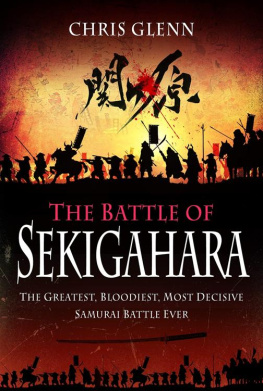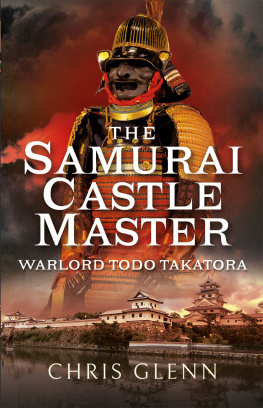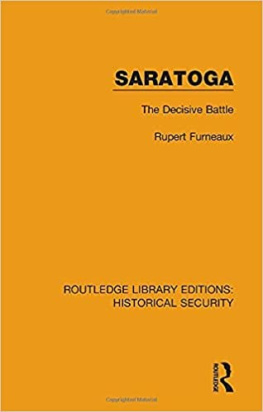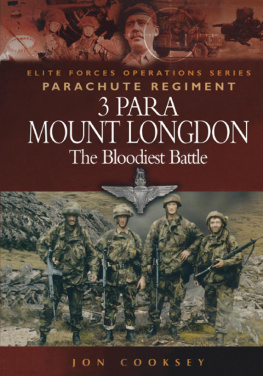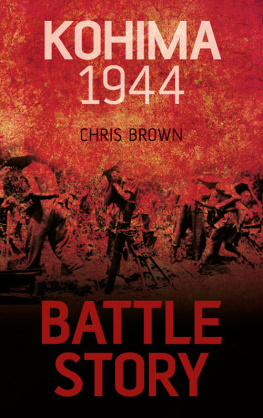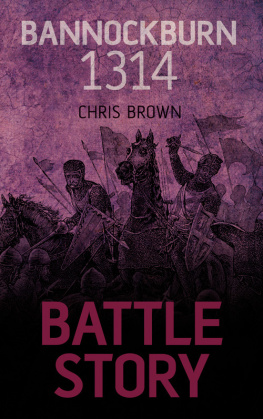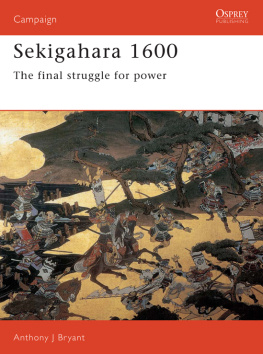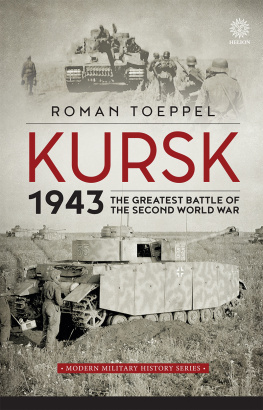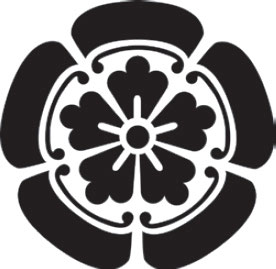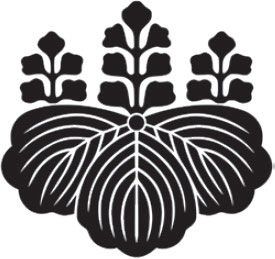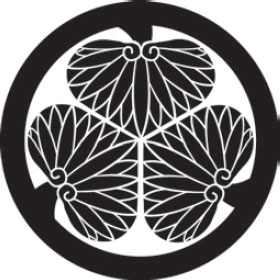The Battle of Sekigahara
The Battle of Sekigahara
The Greatest, Bloodiest, Most Decisive Samurai Battle Ever
Chris Glenn
An imprint of
Pen & Sword Books Ltd
First published in Great Britain in 2021 by
FRONTLINE BOOKS
an imprint of Pen & Sword Books Ltd,
47 Church Street, Barnsley, S. Yorkshire, S70 2AS
Copyright Chris Glenn 2021
The right of Chris Glenn to be identified as the author of this work has been asserted by him in accordance with the Copyright, Designs and Patents Act 1988.
ISBN: 9781399014137
eISBN: 9781399014144
All rights reserved. No part of this publication may be reproduced, stored in or introduced into a retrieval system, or transmitted, in any form, or by any means (electronic, mechanical, photocopying, recording or otherwise) without the prior written permission of the publisher. Any person who does any unauthorized act in relation to this publication may be liable to criminal prosecution and civil claims for damages.
CIP data records for this title are available from the British Library
For more information on our books, please visit www.frontline-books.com, email info@frontline-books.com or write to us at the above address.
Pen & Sword Books Ltd incorporates the imprints of Pen & Sword Archaeology, Atlas, Aviation, Battleground, Discovery, Family History, History, Maritime, Military, Naval, Politics, Social History, Transport, True Crime, Claymore Press, Frontline Books, Praetorian Press, Seaforth Publishing and White Owl
For a complete list of Pen and Sword titles please contact
PEN & SWORD LTD
47 Church Street, Barnsley, South Yorkshire, S70 2AS, England
E-mail: enquiries@pen-and-sword.co.uk
Or
PEN AND SWORD BOOKS
1950 Lawrence Rd, Havertown, PA 19083, USA
E-mail: Uspen-and-sword@casematepublishers.com
For Toshiro and Leia.
With special thanks to Yuka.
SEKIGAHARA
Nakanu nara koroshite shimae, hototogisu.
If the cuckoo wont sing, Ill kill it.
Oda Nobunaga
Nakanu nara nakasete miseyo, hototogisu.
If the cuckoo wont sing, Ill make it want to sing.
Toyotomi Hideyoshi
Nakanu nara naku made matou, hototogisu.
If the cuckoo wont sing, Ill wait for it to sing.
Tokugawa Ieyasu
Contents
List of Illustrations
1.Leader of the Eastern forces and future shogun, Tokugawa Ieyasu. This statue stands in the grounds of his birthplace, Okazaki Castle, Aichi Prefecture.
2.Ishida Mitsunari, leader of the Western forces at Sekigahara. This statue stands in Ishida Village, Shiga Prefecture.
3.Honda Tadakatsu in his distinctive antler-fitted armour and carrying his famed spear, the Dragonfly Cutter.
4.Statue of a mounted Ii Naomasa in full armour of the type worn at Sekigahara.
5.Fukushima Masanori waves a saihai baton to command his troops.
6.Fushimi Castle, Fushimi Ward, Kyoto.
7.Kiyosu Castle, Aichi Prefecture
8.Ogaki Castle, Gifu Prefecture.
9.Plan of Ueda Castle.
10.Tokugawa Ieyasus armour, worn at the Battle of Sekigahara. (Photo courtesy of Kunouzan Toshogu Shrine, Shizuoka Prefecture)
11.Set of typical samurai armour of the early 1600s.
12.Edo period ashigaru armour.
13.Battlefield memorial marker and battle flags pinpointing the site where the Konishi forces launched the flare signalling the beginning of the battle having just witnessed a small contingent of around thirty mounted Ii and Matsudaira samurai emerge from the mist and attack the Ukita forces front lines.
14.Mount Sasao, Ishida Mitsunari and the Western forces command post seen across the killing fields of Sekigahara, with the battlefield memorial on the site of the most violent of the days fighting.
15.View from Ishida Mitsunaris command post on Mount Sasao looking south easterly across the battlefield and Sekigahara central. To the far left is Mt. Nangu, and Ieyasus original command post can be seen below the red and white power pylon bottom left of Mt. Nangu. Ieyasus second command post was positioned within the clump of pine trees, at the very centre of the photograph. The Eastern forces front lines were where the houses border the rice fields.
16.The battlefield of Sekigahara, seen from the Kobayakawa positions on Mount Matsuo.
17.Troops prepare for the attack during a re-enactment.
18.Kobayakawa and Ukita spearmen clash. (Sekigahara Town photograph)
19.Samurai battle action at Sekigahara.
20.Over 850 re-enactors in full samurai armour take to the field for the 400th anniversary in 2000. (Sekigahara Town photo)
21.Site of Tokugawa Ieyasus second and centrally-located command post, around 800m south of the Western forces headquarters on Mount Sasao.
22.The site of Ieyasus first command post, Mount Momokubari.
23.Site of the Shimazu forces encampment at Sekigahara, marked out with the clans war banners.
24.The site of Fukushima Masanoris command post. The large tree on the right is featured in the Sekigahara battle screens.
25.Otani Yoshitsugus grave, not far from his main command post. Behind it is the grave of his loyal vassal, Yuasa Gosuke.
26.The Eastern Kubizuka, or Head Mound, where hundreds of both Western and Eastern heads taken in battle are buried together below this huge old tree. Many visitors to the battlefields pay their respects to the fallen from both sides here to this day.
27.Palisades surrounding Mount Sasao and Ishida Mitsunari and the Western forces command post.
28.The site of Konishi Yukinagas command post, with the Shimazu encampment in the background.
29.The Sekigahara Battle Screen. This large six-panel screen depicts the battle at its peak. (Courtesy of the Gifu Sekigahara Battlefield Memorial Museum)
List of Maps
1.Japan in 1600.
2.The Battle of Sekigahara, 8 a.m. 21 October 1600.
3.The Battle of Sekigahara, 12 p.m.
Acknowledgments
I am profoundly grateful to my parents, John and Val Glenn, and to the members of the Encounter Bay (South Australia) and Sapporo Teine (Hokkaido, Japan) Rotary Clubs for giving me the life-changing opportunity to come to Japan all those years ago. My deepest gratitude also goes to the staff and students of Sapporo Seiryo High School (1985) and to the Yamamoto, Yamagishi and Watanabe families.
I am indebted to Kato Yuka for helping to source materials, checking details and following me countless times to the battlefield and most grateful to David White for his valued friendship, advice and tireless support while fine-tuning my manuscript.
To traditional armourer Ogawa Nobuo Sensei for allowing this foreigner the honour of being your first apprentice and for that very first trip together to Sekigahara. To my fellow members of the Japan Armor and Weapons Research and Preservation Society. Thank you Yamauchi Naomi Sensei for the cover calligraphy, Ito Hironobu for the maps and graphics, Ishida Takayuki (15th descendant of Ishida Mitsunari) and to the Town of Sekigahara, Department of Education and the Gifu Sekigahara Battlefield Memorial Museum. Thanks also to the team at Frontline for getting it all together.
Next page
